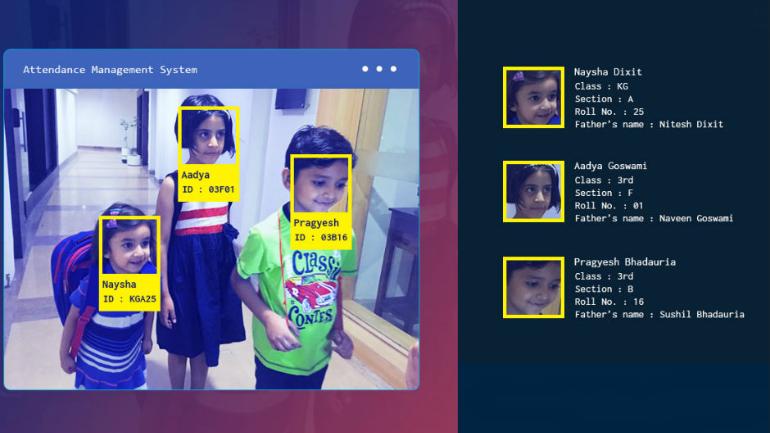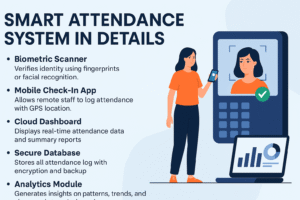
Table of contents
Introduction
The attendance tracking has been the centre of the education system. Traditionally, teaching staff used to mark attendances manually; such a process was time-consuming and highly susceptible to human errors. However, with the help of AI, schools and institutions have slowly started embracing technology for efficient solutions that can be offered in this area. Leading innovations include the AI face recognition in class attendance. This technology makes the process so much easier and has many added benefits, though it raises a question of security and privacy. The concept of AI face recognition in class attendance, how it works, its benefits, the potential challenges it faces, and even the way companies like IndoAI and DutyPar are charting new paths in ensuring reliable solutions, will all be discussed below.
What is AI Face Recognition in Class Attendance?
AI face recognition is a kind of biometric technology using artificial intelligence in distinguishing people according to the features of their faces. In class attendance, AI face recognition systems scan through the faces of students and match them against a pre-existing database and automatically mark them present. Such technology eliminates manual attendance procedures, saves time, and is accurate.
How Does AI Face Recognition Work in Class Attendance?
AI face recognition systems rely on sophisticated algorithms. Here’s a breakdown of the process:
- Image Capture: Cameras are installed in the classroom so as to capture images of the students entering into the classroom. It is usually fixed at strategic points like entrance, classroom wall, and others that can precisely capture the students’ faces.
- Face Detection: Face detection is the process done after the camera captures pictures. It identifies whether there is a face inside the captured image.
- Face Recognition: Once the AI system detects a face, it proceeds to use facial recognition algorithms to determine unique facial features. The system then compares these facial features with a pre-existing database that lists all students and checks if there is a match with the previously given details.
- Marking Attendance: Once the attendance is matched, the AI marks the student’s attendance. In case no face is detected, an alert message is sent to the administrator for identification purposes.

Why Use AI Face Recognition for Class Attendance?
AI face recognition in class attendance offers multiple benefits for educational institutions, teachers, and students. Let’s explore why schools are adopting this technology:
Time Efficiency
The attendance taken on paper takes up class time, especially when classes are large. AI-based attendance would take seconds so that the teacher could be on to their teaching instead of being involved in administrative work.
Accuracy
Human mistake is very prominent when taking attendance on paper. The chances with AI drop drastically. It would identify each student correctly, meaning no marking errors.
Eliminates Proxy Attendance
Another common issue with attendance is “proxy attendance,” when a student asks a friend to mark attendance in their absence. AI face recognition eliminates this problem entirely due to the distinct facial features each student possesses, thereby identifying them correctly.
Automated Records
AI-based face recognition automatically stores attendance data, making record keeping hassle-free. Schools and colleges will not face difficulties in retrieving or reviewing attendance records and evaluating any trends or patterns over time.
Enhanced Involvement
The students will know that attendance is monitored by sophisticated AI and hence more likely to show up for classes, which motivates them to attend classes much more.

How IndoAI and DutyPar are Contributing to AI Face Recognition in Class Attendance
IndoAI and DutyPar are the pioneers in developing AI-based solutions for the education sector. In many ways, these startups have contributed to developing AI face recognition technology, which makes smooth-going class attendance possible.
Advanced AI Cameras by IndoAI
IndoAI is one of the top companies that are specialized in the development of AI cameras. They produce AI-enabled cameras for facial recognition purposes. IndoAI cameras can capture the facial features of students with high resolution and advanced algorithms. Even at various lighting conditions, IndoAI-made cameras are optimized to function with high accuracy.
DutyPar’s Reliable Software Solutions
DutyPar, a leading software development company, has designed complex software for AI-based attendance systems. Its software perfectly integrates with the AI cameras of IndoAI and forms an overall package for educational institutions. Their software offers real-time attendance tracking, automated alerts, and comprehensive reports about attendance, making it easier for administrators to manage their attendance information.
Conclusion
AI face recognition in class attendance is an advanced step in the technology of educational attentions. It offers a smooth, efficient, and reliable system for recording attendance with marked advantages for schools, teachers, and students. Companies like IndoAI and DutyPar are advancing by producing smart AI cameras with considerable software solutions that handle attendance tracking with smarter accuracy and higher security. The possibility that AI face recognition has to the world is tremendous. Despite the challenges associated with privacy and security about the data, work on AI face recognition will continue, giving institutions much greater value, hence making learning more efficient in the hands of students. As the technology matures, it becomes important to balance innovation with consideration about ethical conduct so that when the future is set, it serves to benefit the various stakeholders in the education system.





